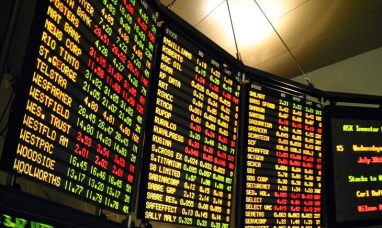The Wall Street Tariffs Impact was evident on Friday as U.S. markets rebounded after a three-day losing streak. The S&P 500 rose 0.2%, on track for its first gain in four days, while the Dow Jones Industrial Average climbed 191 points. The Nasdaq Composite, however, was nearly unchanged.
The uptick followed fresh inflation data that raised hopes for continued Federal Reserve interest rate cuts. While President Donald Trump’s latest tariff announcement on pharmaceuticals, heavy trucks, and imported furniture rattled some sectors, the market reaction was more muted than feared.
Inflation Data Supports Fed Rate Cut Outlook
A critical driver of the Wall Street Tariffs Impact was the release of inflation figures tied to consumer spending. This is the Federal Reserve’s preferred gauge for assessing economic pressures.
The numbers suggested inflationary pressures remain manageable, which in turn supports the Fed’s recent pivot toward easing. After last week’s first rate cut of the year, investors are betting on additional reductions through 2026. Lower borrowing costs generally boost corporate earnings and encourage investors to pay higher valuations for stocks, helping explain Wall Street’s resilience despite tariff risks.
Trump’s Tariffs Stir Sector Volatility
The newly announced tariffs triggered sharp sector-specific moves, underscoring how the Wall Street Tariffs Impact varies across industries.
-
Pharmaceuticals: U.S. drugmakers rose modestly as tariffs were aimed primarily at foreign imports. Shares of Japan’s Sumitomo Pharma fell 3.5% while Chugai Pharmaceutical sank 5%.
-
Home Furnishings: U.S. companies reliant on imports dropped. Wayfair (NYSE:W) and Williams-Sonoma (NYSE:WSM) each slid around 3%, while RH (NYSE:RH) lost 5%.
-
Heavy Trucks: Paccar (NASDAQ:PCAR) jumped 6% after Trump emphasized tariffs on foreign trucks, even though most are already produced domestically.
-
Aerospace: Boeing (NYSE:BA) surged more than 3% following reports of reduced federal oversight, offsetting some tariff-related concerns.
These moves highlight the uneven nature of trade shocks: some companies face immediate cost pressures, while others benefit from a more protective environment.
Global Ripples of the Wall Street Tariffs Impact
The Wall Street Tariffs Impact extended beyond U.S. borders. European markets reacted positively, with Germany’s DAX up 0.7%, France’s CAC 40 gaining 0.8%, and Britain’s FTSE 100 rising 0.5%. Investors in Europe viewed U.S. inflation data as a stabilizing force despite tariff noise.
In Asia, sentiment turned sour. Japan’s Nikkei 225 slipped 0.9%, and South Korea’s Kospi plunged 2.5% amid prolonged tariff tensions. Hong Kong’s Hang Seng fell 1.4%, while China’s Shanghai Composite lost 0.7%.
Stephen Innes of SPI Asset Management likened the tariffs’ psychological effect to “a pebble dropped into a still pond.” While the measures are targeted, their symbolic weight can unsettle investors across regions with already stretched valuations.
Investor Outlook Amid Policy Uncertainty
The broader Wall Street Tariffs Impact lies in investor psychology. On one hand, markets are finding relief in cooling inflation and the Fed’s willingness to cut rates. On the other, tariffs raise long-term concerns about global supply chains, consumer prices, and corporate profitability.
With U.S. stocks trading near record highs since April largely because of interest rate expectations, any shift in Fed policy could reshape the landscape. Friday’s rebound may reflect optimism, but volatility is likely to persist as traders weigh central bank actions against the unpredictable trade agenda from Washington.
Final Take: Balancing Risks and Opportunities
The Wall Street Tariffs Impact shows that markets can shrug off trade headlines when monetary policy provides a safety net. Yet sector divergences reveal hidden vulnerabilities. Companies like Boeing and Paccar benefited from policy moves, while retailers and global pharma firms absorbed the brunt of tariff anxiety.
For investors, the message is clear: the near-term outlook favors caution. Rate cuts may soften the blow, but trade tensions and stretched valuations leave little room for complacency. The interplay between tariffs, inflation, and Fed decisions will define Wall Street’s path heading into the final quarter of the year.
Featured Image – Freepik






